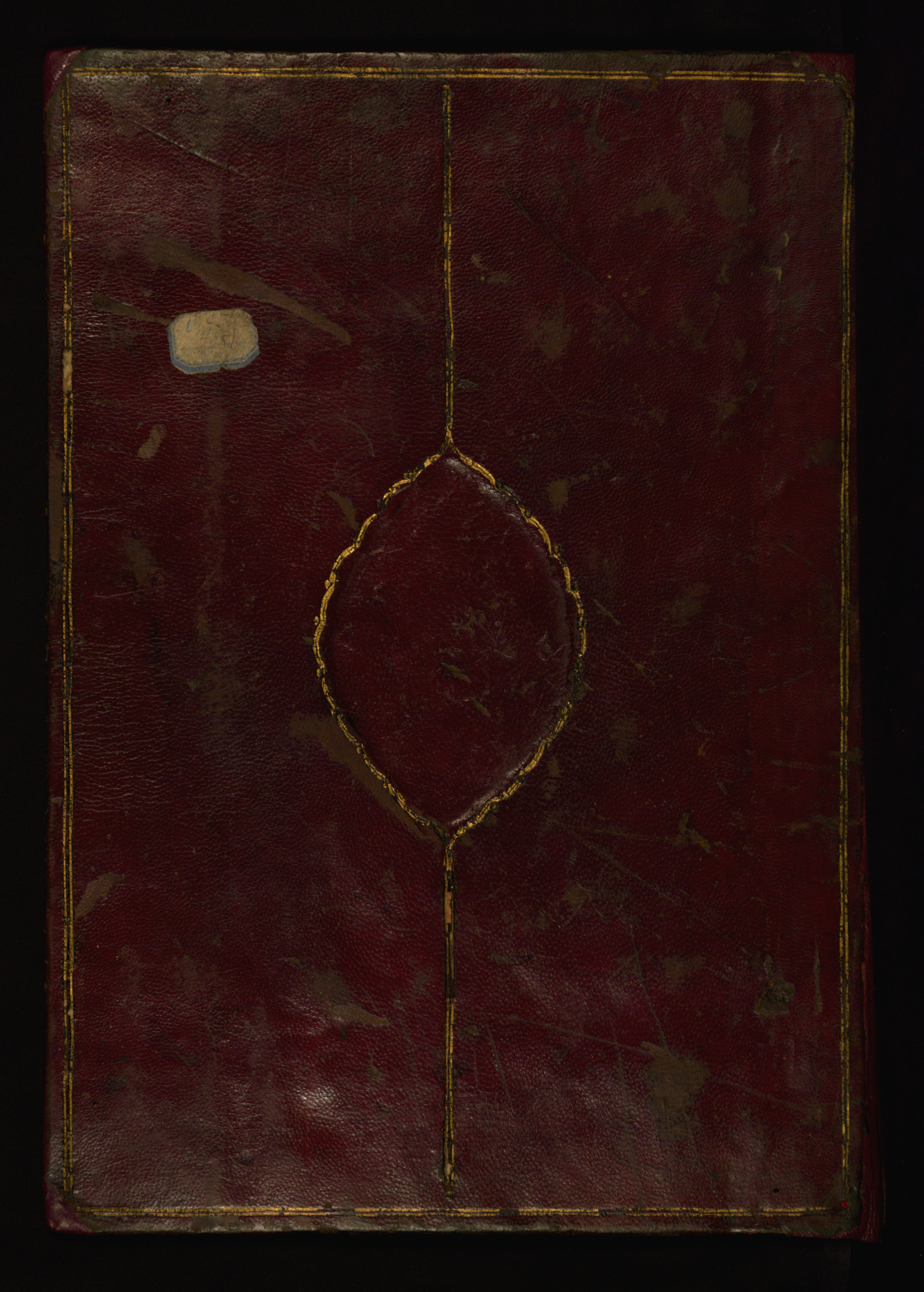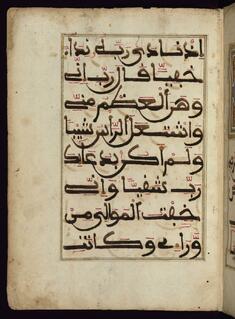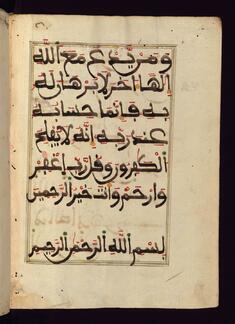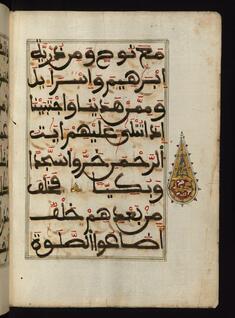Qur'an
(Manuscripts and Rare Books, Islamic World , Islamic Manuscripts)
This manuscript, Walters W.568, is a fragment of the Qur'an, consisting of chapters 19 (Surat Maryam) through 23 (Surat al-mu'minun). It was produced in the Maghreb and dates to the12th century AH/AD 18th. The text is written in a large Maghribi script, with vocalization in red, green, and yellow ink on Italian paper. The codex opens with an illuminated chapter heading for chapter 19 (Surat Maryam) written in the New Abbasid (Broken Cursive) style (fol. 1b) in gold ink within a decorative headpiece. The titles of other chapters are written in the New Abbasid (Broken Cursive) style in gold ink (fols. 21a, 47b, 70a, and 102a) with a marginal medallion. The blind-tooled goatskin binding is not contemporary with the manuscript and probably dates to the 13th century AH/AD 19th.
Provenance
Provenance (from the French provenir, 'to come from/forth') is the chronology of the ownership, custody, or location of a historical object. Learn more about provenance at the Walters.
Henry Walters, Baltimore [date and mode of acquisition unknown]; Walters Art Museum, 1931, by bequest.
Exhibitions
| 2010 | Poetry and Prayer: Islamic Manuscripts from the Walters Art Museum. The Walters Art Museum, Baltimore. |
| 2007 | Speaking the Word of God: Illuminated Korans from the Walters Art Museum. The Walters Art Museum, Baltimore. |
| 1997 | The Divine Word and Sacred Sites of Islam. The Walters Art Gallery, Baltimore. |
Geographies
Maghreb (Place of Origin)
Measurements
Folio H: 11 13/16 x W: 8 7/16 in. (30 x 21.5 cm)
Credit Line
Acquired by Henry Walters
Location in Museum
Not on view
Accession Number
In libraries, galleries, museums, and archives, an accession number is a unique identifier assigned to each object in the collection.
In libraries, galleries, museums, and archives, an accession number is a unique identifier assigned to each object in the collection.
W.568
Do you have additional information?
Related Objects

Text Page with Illuminated Chapter Heading for Chapter 23
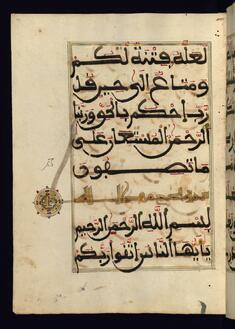
Text Page with Illuminated Chapter Heading for Chapter 22

Text Page with Illuminated Chapter Heading for Chapter 21


